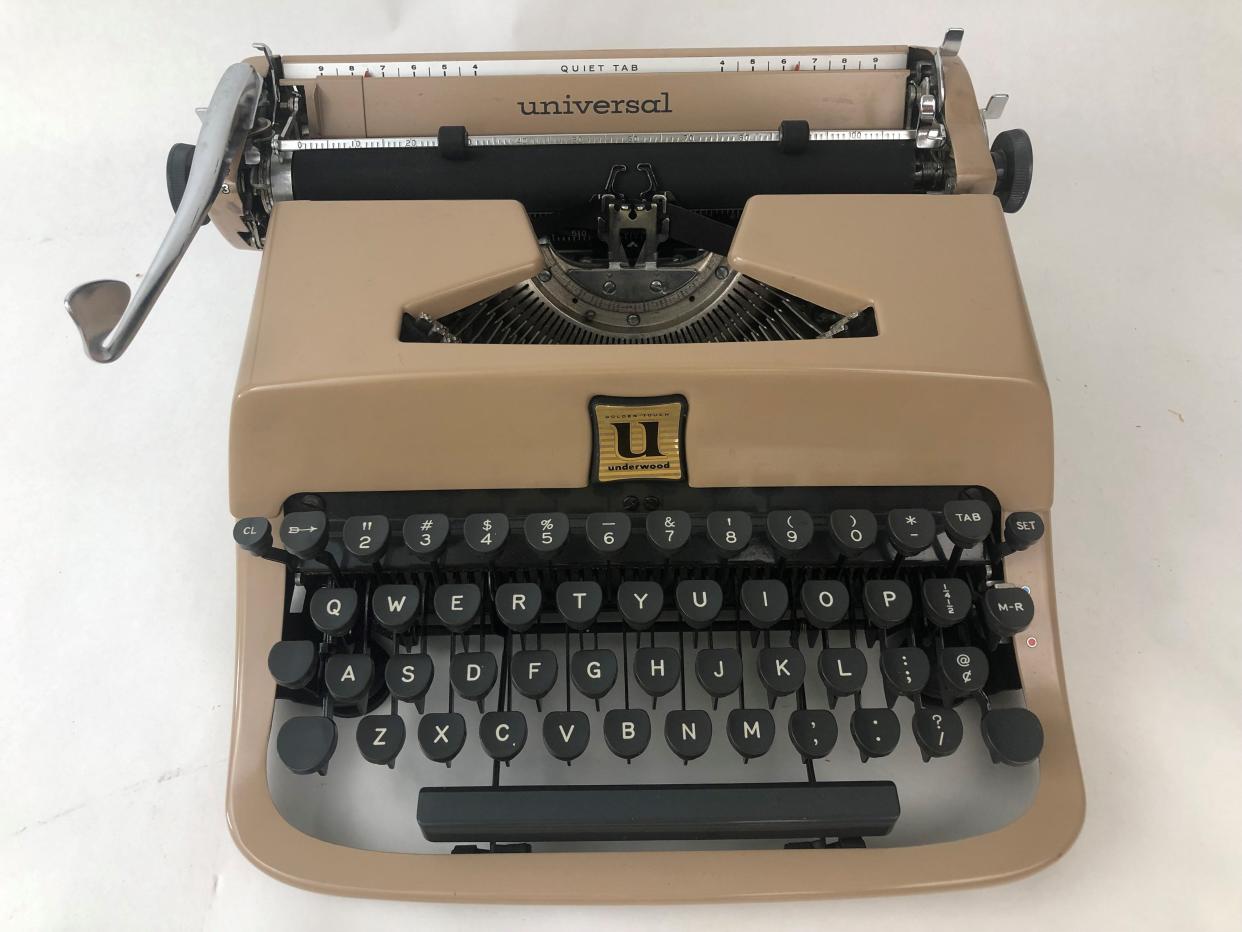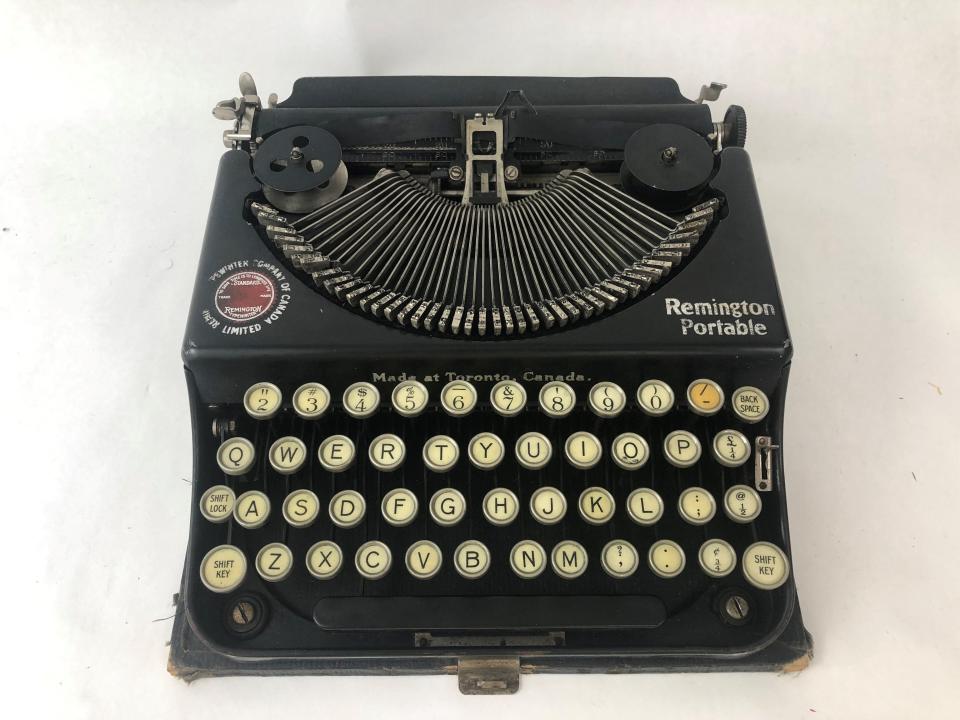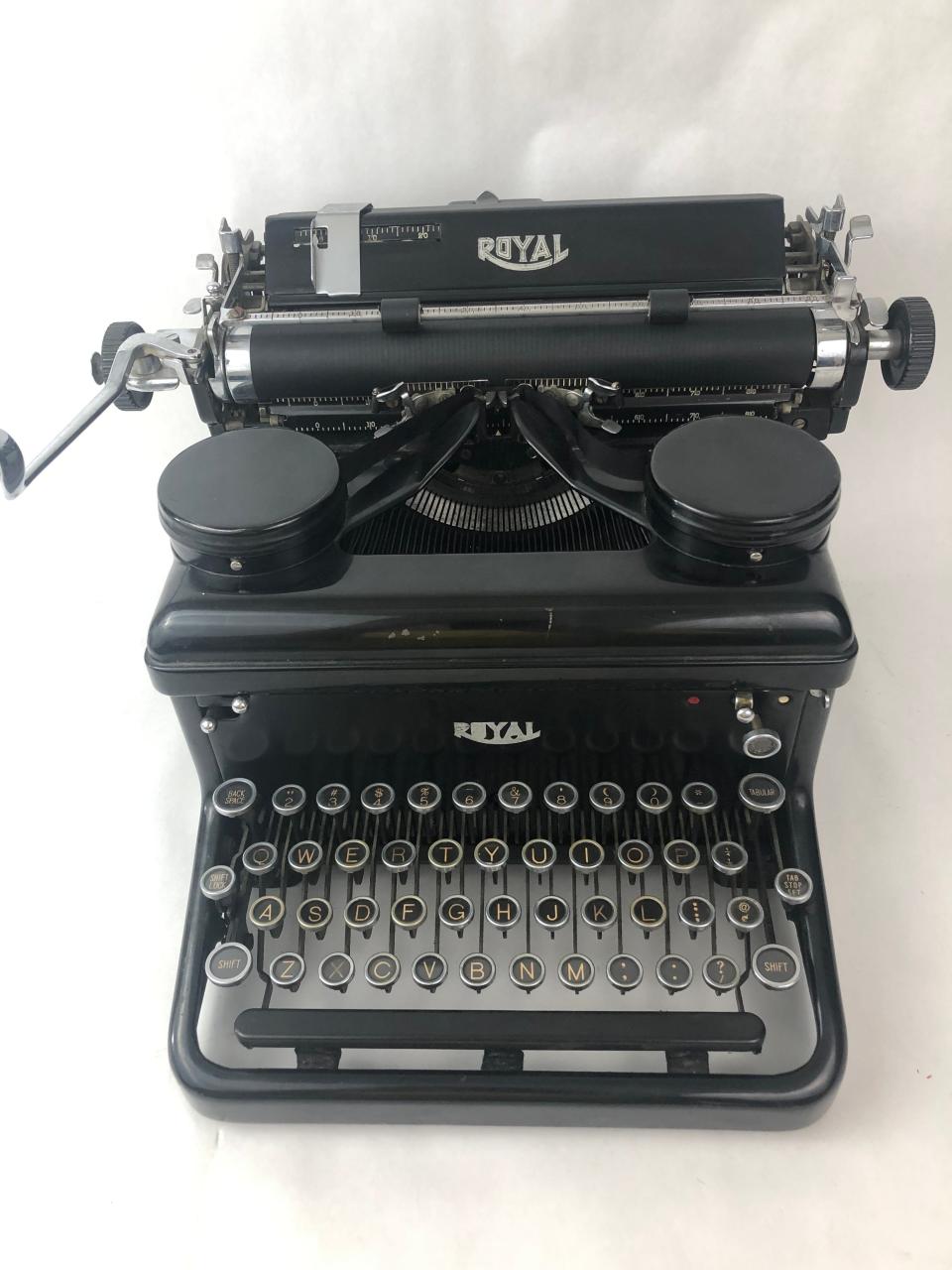Antiques: Embracing an old type of writers

As I sat staring at my keyboard this morning wondering what to write about, it dawned on me: my keyboard! Or more specifically, typewriters. Having somehow made it to an age where Medicare is a card in my wallet, I've spent a lot of time in front of typewriters, and they've generally been good to me. Thus, it's time to return the favor.
Read on for the history of typewriters and why your old Smith-Corona shouldn't be just languishing somewhere in the garage.
While the first functional typewriters emerged just after the Civil War, their true origins date back to at least a century before. In 1714 an English engineer named Henry Mill obtained a patent from Queen Anne for a device that was something like a typewriter, although no description of it exists.

A similar American patent was granted in 1828 to W. A. Burt, but his invention likewise disappeared into the attic of history. Finally in 1868, a new patent was granted to Christopher Sholes and this one stuck. Five years later, the first commercial model was introduced, a large and clunky machine that required a foot pedal to operate and could only type capital letters. Still, it was something.
Interestingly, Samuel Clemens (writing as Mark Twain) was among the first to acquire one of these newfangled machines and is credited with being the first to submit a typewritten manuscript to his publisher. Many more were to follow.
From there, the typewriter advanced but perhaps not as much as you might think. In an educational booklet first published by IBM in 1949, the company could identify only four significant improvements in typewriter functionality since its first appearance: dynamic visibility that allowed the user to see what was being typed, upper and lower case keys, electrical operation and proportional spacing.

By then, IBM was emerging as the 800-pound gorilla in the typewriter space, ultimately building millions of electric typewriters that wound up in nearly every office in the country. IBM Selectric typewriters remain the ultimate commercial typewriter with many still in use today. And yes, dear reader, I have two and use them often. They are virtually indestructible.
With that said, there are (or were) many other makers of typewriters that crowded the market with quality machines before the digital tidal wave swamped the category. Remington (the gun maker), Royal and Smith Corona are the three that most often turn up in antique stores like ours. Considering their number of moving parts and the vigorous use they were subject to, those were amazing machines. Almost all can be had today for a few hundred dollars or less, and there are typewriter repair facilities here and elsewhere that can render them working again.
If you're a frequent typist, it's not the worst idea to have a manual typewriter laying around. They can still do wonders in adding addresses to envelopes, filling out the most complex of forms and adding a bit of old-school character to name cards and personal notes. The clacking of typewriter keys is a sound unlike any other and by itself is almost a reason to break out the old manual machine. And there are plenty of others.
Mike Rivkin and his wife, Linda, are longtime residents of Rancho Mirage. For many years, he was an award-winning catalogue publisher and has authored seven books, along with countless articles. Now, he's the owner of Antique Galleries of Palm Springs. His antiques column appears Sundays in The Desert Sun. Want to send Mike a question about antiques? Drop him a line at info@silverfishpress.com.
This article originally appeared on Palm Springs Desert Sun: Antiques: Embracing an old type of writers

